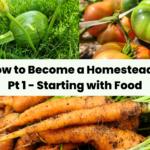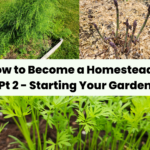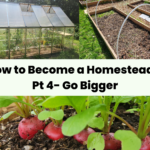In what felt like the snap of my fingers I went from living a completely city-bound life to wanting to homestead and become self-sufficient. Being in the garden and making my own food filled me with such joy and helped me find my purpose in life. This change was all thanks to the 2020 pandemic and I’m so grateful for it. It helped me see what truly mattered and made me prioritize things in my life to become a homesteader.
Once I decided that the homestead life was for me, I wasn’t sure how to get to where I envisioned myself being. It seemed like an impossible journey. Moving to the country – how would we make money and work when our jobs were in the major city? Growing and making my own food – how could I do that when I barely knew how to cook or grow anything?
If this sounds like you, then you’re in the right place.
This mini-series will provide a simple road-map for how I was able to go from a city-slicker to a homesteader in a few short years.
- Read: Part 1 – Starting with Food here.
- Read: Part 2 – Starting Your Garden here.
- Read: Part 3 – Harvest & Learn here.
- Read: Part 4 – Go Bigger here
Preface: My Story
It started small in a tiny suburban backyard with an 8×8 garden bed and from there we focused on eating real whole foods. When we cut out restaurants and pre-made/pre-processed foods and opted for more delicious homemade food it literally changed our lives. We started canning and freezing our garden abundance to utilize throughout the winter. Then we started baking our own bread and (proudly) haven’t bought a loaf from the store since 2020! But we wanted to do more. We loved our time in the garden, learning, growing, eating real food and becoming more self-reliant in a time when food was becoming scarce.
We made big career changes that were really hard and tough so we could buy a new home with some land to keep building our dreams. In 2021 we built nine 4×12 garden beds, a greenhouse and got our first livestock animal – chickens.
2024 marks our fifth year gardening, eating whole foods, and cooking from scratch. Also our third year with chickens and gardening with a greenhouse. We’re planning and prioritizing our most eaten foods from the garden to make the most of our investment. All while also learning new things along the way and still planning for our big forever homestead property with acres of fruit tree fields, vegetable crops, farm animals, and medicinal gardens. We’ve come a long way and I truly hope to help others reading this with what I discovered to get us here.
What’s Next In Your Homesteading Journey?
Self-Sufficiency Finances
The biggest factor in homesteading is self-sufficiency. That includes making money to afford to live. Whether that be on your homestead or outside the home. In modern society most people work outside the home to make money to support their life. When you spend most of your waking hours working for someone else, then coming home to take care of children, pets, and your property, it can feel impossible to also work on a small business.
Homesteading isn’t easy, it’s very time-consuming. But it’s also very rewarding. Being able to commit to being home with your family and being self-sufficient while also doing something you love is the end goal for most people.
For my family, it’s sharing our knowledge via our website, social media channels and books and courses. Along with graphic shirts, mugs, digital downloads and selling our extra eggs and produce. There’s a lot more to it, but having multiple income streams is what works for our family and it’s what we love to do. Taking my writing and design experience and working for myself is what drives me.
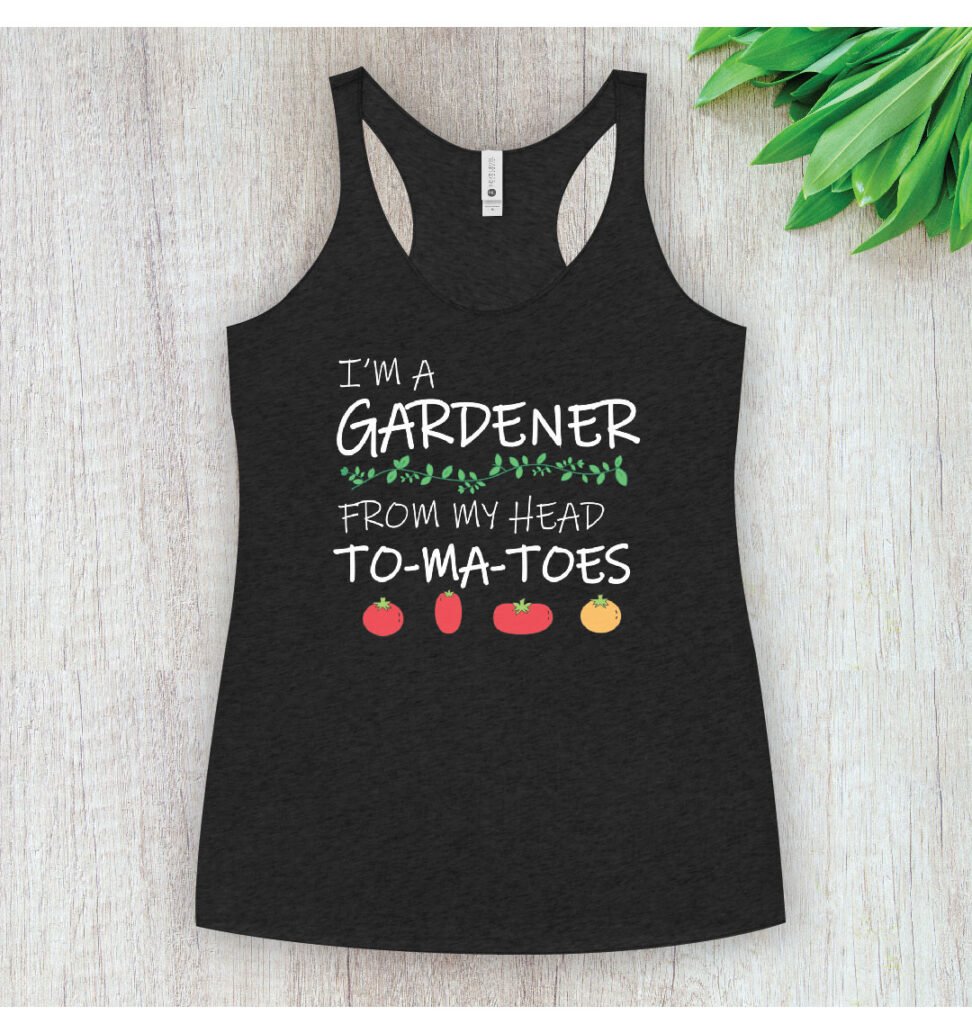
Find your passions and talents and bring them to the world so you can profit off of you. This means you can stay home and make time to tend to the livestock animals daily, and harvest your garden and make meals at home, etc. That brings me to our first step in this section.
Extra Food & Preservatives? – Sell it!
Once your garden beds start overflowing with extra produce or your dozens of chickens that each lay an egg per day is getting overwhelming, find someone in your community to sell it to, locally!
Your local rural community has strong bonds and everyone wants to buy from each other and support other small local businesses. I’m sure your town has more than one main produce stand so instead of starting your own, perhaps chat with the owner and see if they’d be willing to buy your extra harvest off you to sell at their stand.
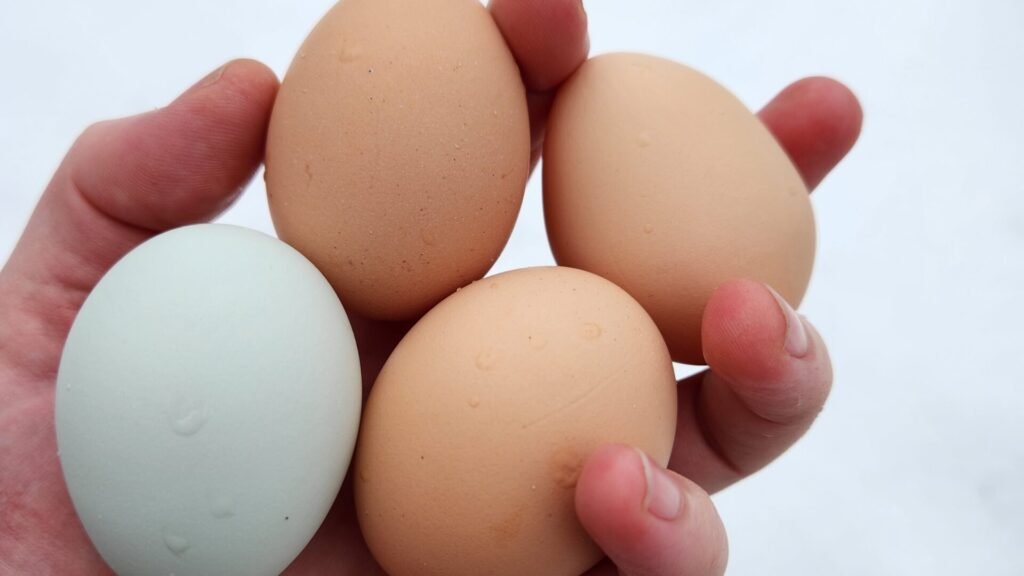
Or find a local neighbour that wants to pickle cucumbers and sell them a bushel of cucumbers. Same goes with eggs. Once you’ve had a consistent amount of eggs and you’re confident that you can keep up with the demand of one or two dozen eggs every few weeks from one person, then find someone who would be willing to buy directly from you. Then if you still have lots of eggs, get more customers.
You are starting to gain invaluable resources on your homestead, share your abundance with your community.
Additionally, even trading with other neighbours is a great way to get more of what you don’t have while offloading what you have too much of.
Start Upcycling
Upcycling is a huge aspect to homesteading that not enough people tell you about.
Become a hoarder, without becoming a hoarder. On a homestead as you build more and more and try to be self-sufficient, you’ll soon realize that you’ll need a lot of random things. Old scraps of wood, palates, recyclable containers, egg-cartons, etc.
If you watch any homesteading show (ex. Homestead Rescue), it’s important to save usable material or get people’s old materials and save it until you may need it one day! Lots of greenhouses are built using old windows, if you find on facebook marketplace that someone is looking to get rid of 10 windows for free, you get in that truck and go get those windows for free! You might want to build another greenhouse or you might want a window in your chicken coop. The possibilities are endless.

Going back to the egg-cartons, if your livestock includes egg-laying animals, save all the cartons you can find and ask your friends to save theirs and bring them over next time you see them. Once you start selling eggs you’ll also need cartons to give away so instead of buying cartons, get them for free!
Our daily fermented chicken food is actually fermented in a Folgers coffee container. It’s large, durable and has a handle on it to easily carry around – much better than spending money on something.
Creativity is key to a homesteader’s lifestyle.
Up next, is Part 6 – Stay Home & Enjoy Life. Subscribe to our email list so you don’t miss any of the next installments of this How to Become a Homesteader series!


